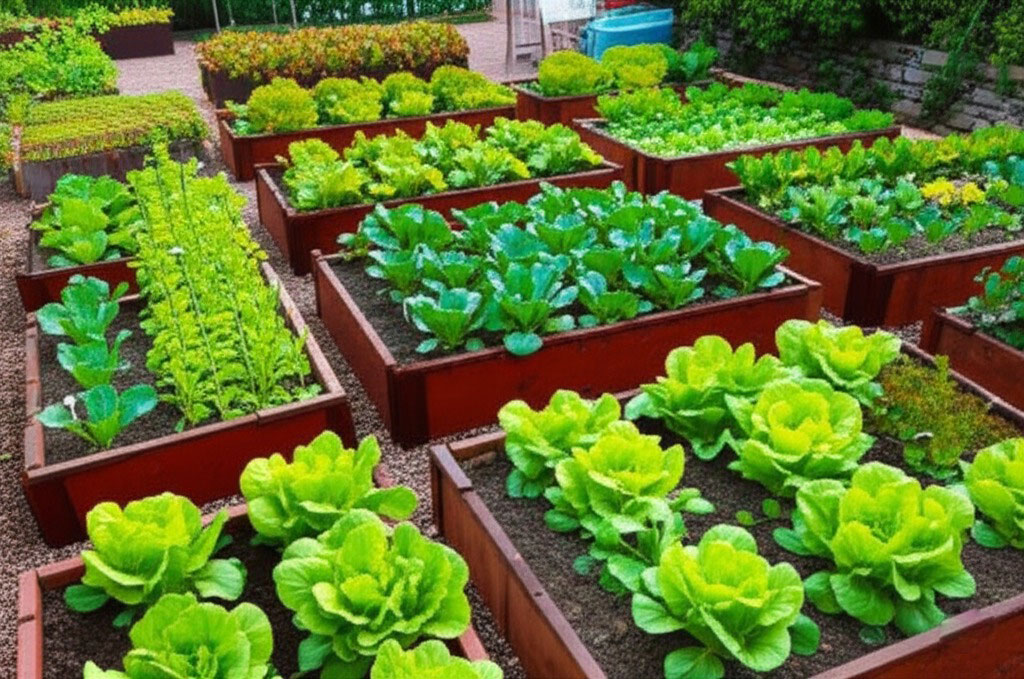While gardeners in states with “real winters” can’t even get a shovel into the frozen ground, many local vegetable plots have crisp snow peas weighing down vines and green bunches of broccoli resting under the sunny skies.
Orange County is one of few places in the country where gardeners can harvest tomatoes in November or pull heads of cabbage out of the garden in February. If you’re not taking advantage of the mild climate and gardening year-round, it may be time to think about planting a continual garden.
It’s possible to grow lots of tasty vegetables throughout the year in Orange County, says Allan Garofalow, a Buena Park gardener and treasurer for the California Organic Gardening Club.
“Keep a garden growing year-round, and you can go out every day and pick fresh produce that’s far superior to what you’ll find in the stores. Garden without pesticides and you also have the satisfaction of knowing you’re eating chemical-free vegetables,” he says.
Year-Round Gardening in Orange County
Here you can plant tomatoes from March through August and enjoy them fresh most of the year.
“Orange County has been described as having just two seasons—spring and summer,” says Garofalow. “Our summer lasts from July through September; at this time warm-weather crops like cucumbers and tomatoes thrive. Spring composes the rest of the year. Many people don’t realize that this latter time can be very active in the garden.”
Spring and Summer Planting Tips
In March, both spring and summer crops can be planted. “It’s possible to plant cool-weather vegetables now and get a crop in before the summer plants take over,” says James Bailey, coordinator and supervisor of the Centennial Farm at the Orange County Fair. Good picks are:
- Beets
- Broccoli
- Cabbage
- Brussels sprouts
- Cauliflower
- Mustard greens
- Snow peas
- Spinach
- Artichokes
- Rhubarb
- Celery
While your late winter/spring crop is growing, you can also begin seeding plants such as corn, cucumbers, tomatoes, eggplants, bell peppers, turnips, shallots, peanuts, melons, watermelons, pumpkins, summer squash, winter squash, zucchini, and beans. Many seeds planted now will be ready for transplanting into the garden in a month or two.
Plants for Year-Round Gardening
Plants that can be grown any time of year here include:
- Lettuce
- Radishes
- Most herbs
- Swiss chard
- Collards
- Carrots
Gardening Tips for Year-Round Success
For year-round gardening, most experts suggest sticking to a small, manageable plot, rather than a large, sprawling garden. “You don’t want to waste a lot of time and effort on more square footage than you need,” says Huntington Beach resident Paul Pirtle, who has gardened on a year-round basis for several years. “It’s easier to control a smaller space and it’s less intimidating.”
Raised Beds and Trellis Systems
In hard clay soil, many gardeners turn to raised beds because the soil is always loose and workable and drains easily. A raised bed also gives you a confined space in which to plant. Pirtle has five six-by-three-foot raised beds, one of which is always full of lettuce.
A trellis system for climbing plants such as peas, beans, and melons should also be added to your garden, says Garofalow. Put a trellis at the back of the garden so that the structure or attached plants don’t shade other crops. Many gardeners secure concrete reinforcing wire between two-by-twos or metal stakes and use this as a trellis, which will last for several years.
Soil Health and Fertilization
When you garden on an intense, continuous basis, it’s critical to keep the soil healthy and viable, says Garofalow. Summer gardeners don’t have to pay as much attention to soil fertility because months of disuse give the earth time to re-energize. When you constantly use the soil, though, it’s important to keep it nourished.
For the active gardener, a compost pile is worth its weight in gold. If you don’t already have one, start a compost system and add the resulting humus to your garden at least once or twice a year.
Garofalow also suggests replenishing your soil with:
- Blood meal (high in nitrogen)
- Bone meal (good source of phosphorus)
Cover Crops
If part of your garden will be dormant over the winter, you can build the soil by planting a green cover crop in the fall, which will grow during the winter and can be turned into the soil in the spring. This re-energizes your garden by adding nitrogen and organic matter.
Cover crops Pirtle suggests include:
- Winter rye
- Sweet clover
- Alfalfa
- Hairy vetch
Turn the cover crop under a month before you want to plant in that area.
Crop Rotation and Record-Keeping
Although you will be using your garden on a continuous basis, you should wait at least two weeks between plantings, which will allow beneficial organisms to multiply.
Crop rotation is essential to keep soil and plants healthy. For example, don’t plant heavy nitrogen feeders like tomatoes in the same spot for three years. Instead, plant beans or peas, which replenish the soil with nitrogen.
Organizational Tips
You can keep track of what works best in your year-round garden by keeping records. Take a notebook and date each entry, noting the weather and what you did in the garden that day. Include what you planted, fertilized, and pruned. This notebook can help you understand why certain crops succeed or fail, allowing you to replicate successful strategies.
Conclusion
Gardening is an experimental activity, and the climate in Orange County is forgiving. Be willing to try new things and be surprised by the results. As Garofalow says, “Gardening’s an adventure and will constantly lead you to new discoveries.”

